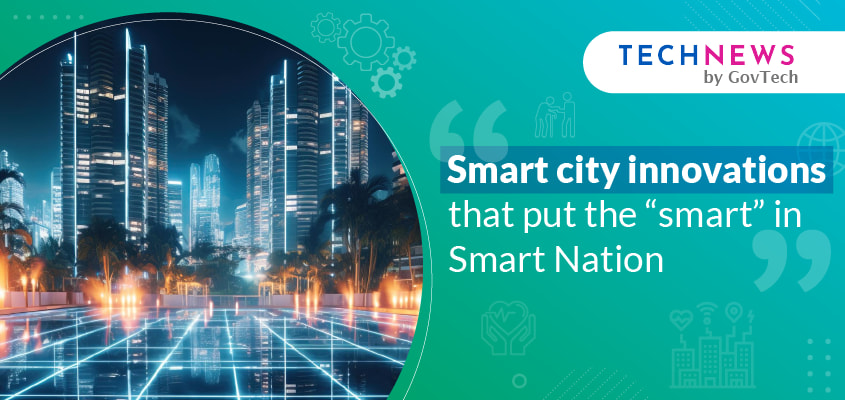3 smart city innovations in Singapore you may not know

You’ve probably heard of Singapore’s Smart Nation goal, but do you know that the country was ranked as the smartest Asian city and seventh-smartest in the world last year in the Smart City Index? Indeed, the Republic has consistently made the top 10 in the index since 2019.
This recognition comes from tireless work from all aspects of the government and close collaboration with the private sector. Here, we’re highlighting three smart city innovations that you may not have heard of but nonetheless put the “smart” in Smart Nation.
1. Punggol Digital District
Set to be launched progressively from 2024, the Punggol Digital District will infuse technology into the way people live, work, and play within its 50 hectares.
For starters, facial recognition technology will be used for everything from workplace access to unlocking bicycles at bike kiosks to paying for purchases.
The new Singapore Institute of Technology’s campus will also be located in Punggol, featuring fully connected buildings powered by the Internet of Things and connected to a Multi-Energy Micro-Grid, which eliminates carbon emissions equivalent to removing 2,000 vehicles from the roads.
Other features include car plate recognition technology so that parking lots can be reserved through an app and smart lamp posts that detect the proximity of people and dim and brighten accordingly.
All these are made possible by the Open Digital Platform, a smart city operating system that integrates various district management operations onto a single platform. Using the platform, estate managers can control the cooling system, pneumatic waste conveyance, autonomous goods delivery, and security systems.
2. Sensei Care Kit
Singapore’s ageing population is a significant challenge that’s often in the headlines, but less often discussed is the impact on caregivers as an increasing number of elderly people need care.
The Sensei Care Kit aims to help caregivers by connecting various devices measuring health metrics such as weight and blood pressure, thereby enabling frictionless and comprehensive health monitoring of seniors at home.
Caregivers can even remotely monitor seniors’ health, improving the odds of early detection of issues that require closer attention. More frequent health assessments also empower caregivers and the elderly with data to make informed decisions.
3. Personal Alert Button
Another innovation that plays a significant role in managing Singapore’s ageing population is the Personal Alert Button.
The wireless device – a simple box with a button – can be placed anywhere in a senior’s home. Upon activation, it will send a distress signal to either a Senior Activity Centre (SAC) or CareLine , a 24-hour telecare service provided by Changi General Hospital. The PAB’s 4G technology enables communication with distressed seniors. A 10-second recording can also be made by the senior to explain the situation.
From 2020 to 2023, around 800 seniors received emergency medical assistance through the alert system. As of mid-2023, the PAB has been installed in about 8,600 units in 52 rental blocks, benefitting 10,000 seniors. The system will be expanded to all seniors aged 60 and above living in public rental housing, helping about 27,000 more seniors living in about 170 rental blocks.
Smart Nation is a home for all
Above all, a Smart Nation is about using tech to improve the lives of everyday Singaporeans.
The featured innovations benefit a myriad of residents, be it, seniors who want to stay active and live independently, fitness enthusiasts looking to take their physical training to the next level, or workers and students who want to work and learn in a world-class tech environment, a smart city should rightfully benefit everyone.
After all, Singapore is not just a city, it’s our home.



